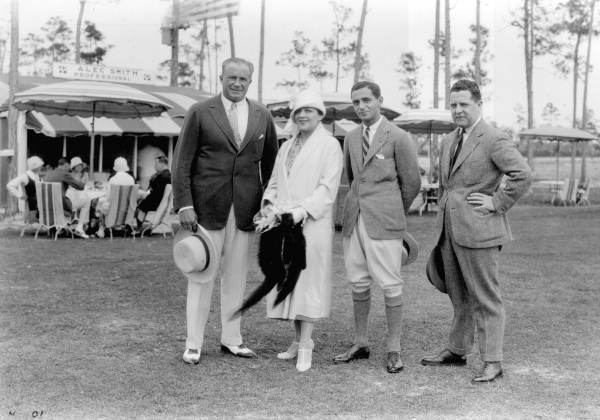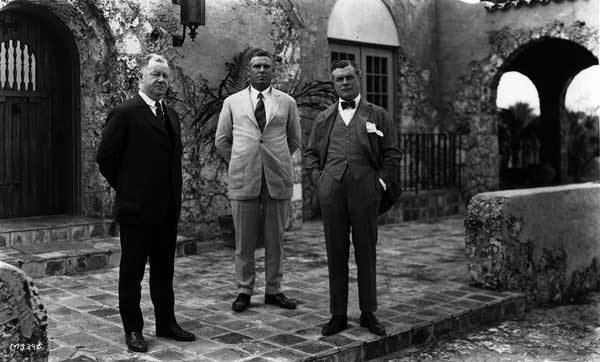Name George Merrick | ||
 | ||
Died | ||
George Edgar Merrick (1886–1942) was a real estate developer who is best known as the planner and builder of the city of Coral Gables, Florida in the 1920s, one of the first planned communities in the United States .
Contents
Family background and youth

Merrick was born in the Pittsburgh suburb of Springdale, Pennsylvania. His father, Solomon G. Merrick, was a Congregationalist minister. The family moved to Miami, Florida from Duxbury, Massachusetts in 1898 when George was 12 years old. He attended Rollins College in Winter Park. Upon graduation, Merrick moved to New York to study law until 1911 when his father's death prompted him to return to Miami.
Career

In October, 1915, Merrick was appointed by the governor of Florida to replace F.A. Bryant as the county commissioner in District 1. He spent the next 15 months on the commission championing the building of roads in south Florida, including major arteries that would later serve to connect his well-planned community of Coral Gables with the fast-growing city of Miami. Along with Commissioner Edward DeVere Burr of Arch Creek, the two men ushered the vast majority of all road construction projects in Dade County, including the construction of South Dixie Highway (US 1), the Tamiami Trail across the Everglades, the County Causeway to Miami Beach, Ingraham Highway (later known as Old Cutler Road) along the coast, the Miami Canal Highway and many others. These improvements allowed the population of Greater Miami to quadruple from 1915 to 1921, transforming a pioneer territory into a burgeoning metropolis.
Coral Gables

Beginning in 1922, on 3,000 acres (12 km²) of citrus groves and land covered in pine trees which his father had left him, Merrick began carving out a town along the lines of the City Beautiful movement. He designed the new town in great detail, featuring wide, tree-lined boulevards, delicate bridges and sedate urban golf courses. Merrick's secret was his passionate devotion to aesthetics. He wanted to focus on the finest details of this town not just on the major ideas behind the project. As a result, his team included men of diverse background, such as Denman Fink, an artist, H. George Fink and Phineas Paist, both architects, and Frank Button, a landscape artist. Another important aspect of the planning that was very important to Merrick was zoning divisions. Merrick wanted areas of the community to be set aside as commercial, residential or recreational and he wanted the divisions to be clear

In three years, Merrick spent over $20 million to build a thousand Mediterranean style houses, which complemented the Biltmore Hotel, the country clubs, and the other community buildings that Merrick had also designed and overseen the construction of.

In a 1925 interview with the New York Times, Merrick commented: "Just how I came to utilize the Spanish type of architecture in Coral Gables, I can hardly say, except that it always seemed to me to be the only way houses should be built down there in those tropical surroundings."
Once he was done building the core of Coral Gables, Merrick decided to branch out creatively. Many people who did not like the Mediterranean Revival Style rejected Coral Gables because its lack of variety. So, Merrick decided that he would design small communities, or villages, within Coral Gables with different international influences.
Merrick is credited with the establishment of the University of Miami in Coral Gables in 1925 with a donation of 600 acres (2.4 km2) of land and a pledge of US$5 million. The following year, just weeks before the start of the inaugural school year, a devastating hurricane on September 17–18, 1926, followed by the Great Depression, ended Merrick's dreams of further developing Coral Gables.
With time, Merrick fell into heavy debt and by 1928 he was asked to leave the Coral Gables Commission. At this point, he left Coral Gables and moved to Upper Matecumbe Key where he opened his Caribee Club not far from the famous Long Key Fishing Camp on nearby Long Key, an upscale fishing resort, with his wife. Merrick returned to Gables only when he became the postmaster for the county, two years before his death. The monstrous Labor Day Hurricane of 1935, called the "Storm of the Century", destroyed almost everything on the Middle Keys, including Merrick's Caribee Club, which was never rebuilt.
Merrick said in 1937 that he envisioned a Miami that had all of its black people completely removed from the city limits.
George Merrick's former home in Coral Gables, Coral Gables House, is maintained as a historic house museum. The Soloman G. Merrick Building at the University of Miami at Coral Gables was built in honor of Merrick's father.
Personal life
On February 5, 1916, Merrick married Eunice Isabella Peacock, daughter of Coconut Grove pioneers, R.A.S. Peacock and Lilian Irene Frow. Merrick built a home for his bride, called Poinciana Place', located at 937 Coral Way, in Coral Gables.
In Popular Culture
Merrick appears as a major supporting character in the 2014 point and click adventure, A Golden Wake.
